
ℹ️ Information about Tu Le
🚍 How to travel to Tu Le
☀️ Weather in Tu Le
❓ FAQ + Tips for Tu Le
📸 Pictures of Tu Le
Quick answer: Tu Lệ Valley in Yên Bái is a peaceful mountain area known for its gorgeous terraced rice fields and deep cultural roots. The fields are carved into steep hillsides, and the valley is home to Thai and H’Mông communities. With a slower pace than Mu Cang Chai, Tu Lệ is a scenic stop with hot springs and traditional rice specialty.
At a glance:
- 📍 Location: Tu Lệ Commune, Văn Chấn District, Yên Bái Province.
- 🌾 Rice terraces: Stretch across steep hills, forming sweeping valley patterns.
- 🧬 Ethnicity: Populated by Thai and H’Mông groups who farm the terraces and harvest sticky rice.
- ♨️ Activities: Relax in hot mineral springs, walk through village paths, or stay in local homestays.
- 📸 Scenic route: Located on the road from Nghĩa Lộ to Mu Cang Chai via Khau Pha Pass — a favourite for photographers.
Last updated in November 2025
Tu Le town – a good stopover before you arrive to Mu Cang Chai from Nghia Lo.
-
- Tu Le (Tú Lệ) in Yen Bai province, Van Chan District, is a small town and valley that lies on the road from Nghia Lo to Mu Cang Chai. So it is a bit out of hand, but this place, like Mu Cang Chai, intersects the main and fairly good QL32 main road. This place is mainly visited by Vietnamese who continue to Mu Cang Chai and then mostly foreign travelers who ride their motorbikes. The town is surrounded by several smaller villages inhabited by ethnic Hmong. If you travel from Nghia Lo town to Mu Cang Chai (100 km, road QL32) you can not miss this place.
Tu Le is surrounded by mountain ranges and rice fields and terraces.
-
- The town and the valley of Tu Le do not have the same tourist attractions as elsewhere in Vietnam, but huge rice fields, all surrounded by mountain massifs and mountains, create a beautiful and unique landscape. It is an agricultural area and the main commodity is here as in many similar places of the north of Vietnam, rice. There is also a small, easily accessible tourist cave near the town – Tien Nu Cave (Động Tiên Nữ). However, you can take a walk or walk through the Hmong villages, but you should have a guide to explore the mountain area.

Beautiful scenery of rice fields and terraces and Khau Pha mountain pass.
-
- The entire route from Nghia Lo to Mu Cang Chai (about 100 km) through Tu Le offers beautiful scenery, mountain paths, great views of nature and pictures of hard working people on the rice fields and terraces. Driving this area is best on a motorbike (for experienced drivers), there are some local buses between Nghia Lo and Mu Cang Chai and Tu Le, but it is hard to find bus timetables and it is very limited, so you have no choice but to find out on the spot e.g. ask at the hotel/guesthouse) or simply wait on the road for bus (for adventure travelers). Right behind Tu Le begins the Khau Pha Mountain Pass, which is popular and known also for paraglading.
How to get to Mu Cang Chai from Hanoi? ➜
Tu Le will offer a fairly solid choice of accommodation and refreshments.
-
- Tu Le has already quite transformed and offers smaller hotels, guest houses, but also new luxury and very nice resort Le Champ Tu Le Resort, in the vicinity is also possible to try homestay with ethnic residents (You should try homestay). There is also a tourist amusement park – Aeris Hill, this park is located right at the Tu Le Champ Resort, you can try zorbing above Tu Le valley or you can try mountain climbing and other sport attractions. It can be expected that tourism will grow here in the future. This place is also popular for weekends, so be aware that there may be more Vietnamese tourists here at the weekend days. There are a number of local restaurants in the city, mostly with traditional Vietnamese food (Pho, rice…), coffee, tea, etc., so you will not die of hunger.

How to get to Tu Le? You can ride a motorbike or take the bus/minivan.
-
- From Hanoi to Tu Le (via Nghia Lo) it is about 240 km and you can travel by bus/minivan or motorbike. The train connection from Hanoi leads only to Yen Bai City, which is about 130 km away. So you would have to take a local bus to Nghia Lo and then to Tu Le and it is a little experiment and it takes a lot of time. Personally, I recommend combining this trip with a visit to Mu Cang Chai. And there are buses to Mu Cang Chai via Tu Le from Hanoi. Traveling by bus from Hanoi to Mu Cang Chai takes about 7 hours, to Tu Le about 6 hours.
From Hanoi to Tu Le or Mu Cang Chai (via Nghia Lo) – by bus or minivan.
-
- A minivan also runs from Hanoi to Tu Le and tickets can be purchased online at 12go.asia. Bus tickets for the sleeping bus from Hanoi to Mu Cang Chai can be booked here at Baolau. So you can also travel by bus to Mu Cang Chai and stop in Tu Le (but you have to arrange this in advance with the bus driver, I do not guarantee whether the driver will comply in this). Another option is to go to Nghia Lo and rent a motorbike and go all the way to Tu Le (50 km), then to Mu Cang Chai and even back. However, it applies to people who have experience with a motorcycle.
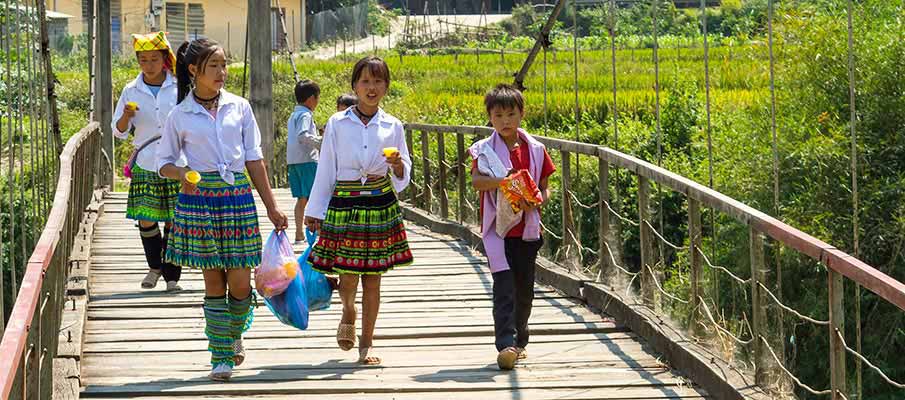
When to visit and go to Tu Le or Mu Cang Chai? What to expect?
-
- In fact, the same applies to Mu Cang Chai. Of course you can go all year round, but it is better to avoid the monsoon season (summer months), because there is a risk of more rain (but these rains are not a permanent rule). If you want to see yellow to golden rice fields just before harvest, it is good to choose the turn of September-October. October is a convenient month to visit this place and its surroundings near Mu Cang Chai (if there is no rain or floods).
Book motorbike in Vietnam online ➜
The rice harvest season in Tu Le is the turn of September – October.
-
- The average annual temperature in Tu Le is about 23 °C, but in the summer months it can be very high up to 30 °C, in winter the temperatures can drop significantly down to 10-15 ° C. So, in the autumn months, a pleasant climate may be recommended to visit. Winter months (dry season) may also not be bad, but you will not see the colorful landscape as before harvest. I recommend always to watch the weather before you go.

Where to stay and where to find accommodation in Tu Le? Homestay, hotels?
-
- The town of Tu Le offers mostly guest houses, hostels (Nha Nghi) or small hotels. Prices are low and start at around 5 USD/bed. Most of these guesthouses are located on the main road in the city. Some of them have a shared restaurant and offer meals. If you want to rent a motorbike, try to ask at the guesthouse. There are a few local homestays in the area around Tu Le, including ethnic residents, and above the city is the new luxury resort Le Champ Tu Le Resort. Outside Tu Le, you can also stay at Khau Pha Pass. Below are some tips for accommodation in Tu Le.
🏡 Accommodation in Tu Le / Van Chan:
▶ Homestay Nhận Thịnh
▶ Homestay Búng Sổm
▶ Gio Nui Homestay And Restaurant
▶ Khách sạn Mường Hoa
▶ Le Champ Tu Le Resort (luxury resort)
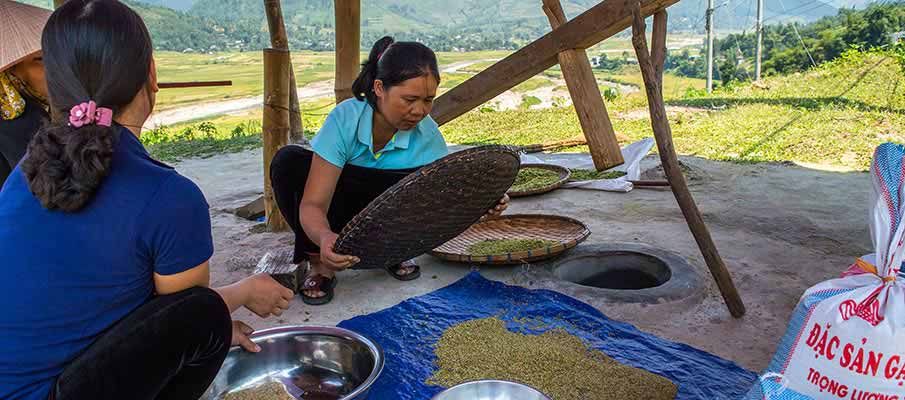
❓ Frequently asked questions – Tu Le (Van Chan District):
1. How to get and travel from Hanoi do Tu Le – Yen Bai?
-
- You can use minivan or tourist bus (about 6 hours to Tu Le) or ride a motorcycle (experienced drivers). There is no train connection to Tu Le or Mu Cang Chai, just from Hanoi to Yen Bai. The bus from Hanoi to Mu Cang Chai takes about 7 hours. There is no train from Hanoi to Tu Le, only train to Yen Bai City (you can book tickets online).
- Bus tickets from Hanoi to Tu Le + Mu Cang Chai you can book on 12go.asia and Baolau.
2. Where is the town and valley of Tu Le?
-
- The town and valley of Tu Le is located in Yen Bai province, Van Chan district, about 240 km from Hanoi and about 50 km before Mu Cang Chai and 50 km from Nghia Lo. The city is surrounded by mountain massifs and in the vicinity are rice fields and rice terraces, nature.
3. When to visit Tu Le?
-
- You can go to Tu Le at any time and month, but it is better to avoid the monsoon season. The period of rice harvest is here at the turn of September-October, October is quite a suitable month to visit this place, pleasant temperatures, yellow-gold rice fields, rice harvest.
4. How to get from Nghia Lo to Tu Le?
-
- If you stop in Nghia Lo then you have to continue by bus or motorbike. There are local small buses between Nghia Lo and Tu Le, but it is very limited and you have to find out the times before leaving, the best way to ask where you are staying, I would rather not rely on the buses.
5. What are the options for dining in Tu Le?
-
- There are many small vietnamese restaurants in Tu Le and there is no problem to buy various vietnamese dishes.
6. Why is the Tu Le interesting for tourists and travelers?
-
- Tu Le or the area around Khau Pha Pass is photogenic mainly due to rice fields, there are ethnic Hmongs, beautiful landscape, but also a popular place for paraglading, which takes place mainly at Khau Pha Pass.
7. Where is Khau Pha Pass?
-
- Khau Pha Pass (located in Mù Căng Chải District) starts right outside of Tu Le town, on QL32 road, towards Mu Cang Chai. Total length of Khau Pha Pass is about 30 km. The altitude of the Khau Pha Pass is about 1200-1500 meters above sea level. Drive carefully your motorbike.
8. Where is Aeris Hill Amusement Park?
-
- Aeris Hill sport park is located in Tu Le town, right at Tu Le Champ Resort. Aeris Hill’s adventures consist of four main attractions, Vietnam’s longest zipline, a zorbing range, a high rope arrangement, and mountaineering.
9. Where is Tien Nu Cave (Động Tiên Nữ)?
-
- Tien Nu Cave (Động Tiên Nữ) is in the town of Tu Le and it is easily accesible, see map.
10. How to get from Tu Le to Mu Cang Chai?
-
-
From Tu Le to Mu Cang Chai you can travel by bus/minivan, which occasionally pass through and go to Mu Cang Chai or you can travel by motorcycle. You must check the bus departure times on the spot in Tu Le. There are buses, but it is limited. There is no train between Tu Le and Mu Cang Chai.
-
BOOK a TOUR / ACTIVITY in Vietnam ➜
📍 Map of the area of Tu Le and Mu Cang Chai:
(all the marked points are intersected by the main road QL32 – Tu Le, Khau Pha Pass and Mu Cang Chai)

Tu Le – town and rice field, terraces + surrounding – Photos:
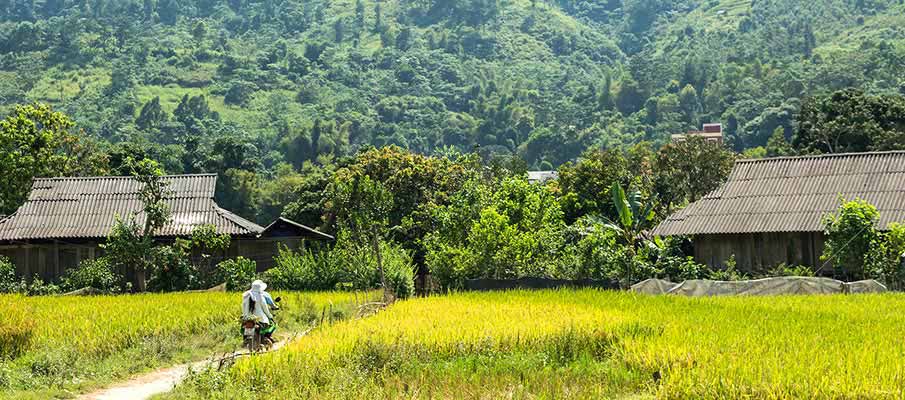
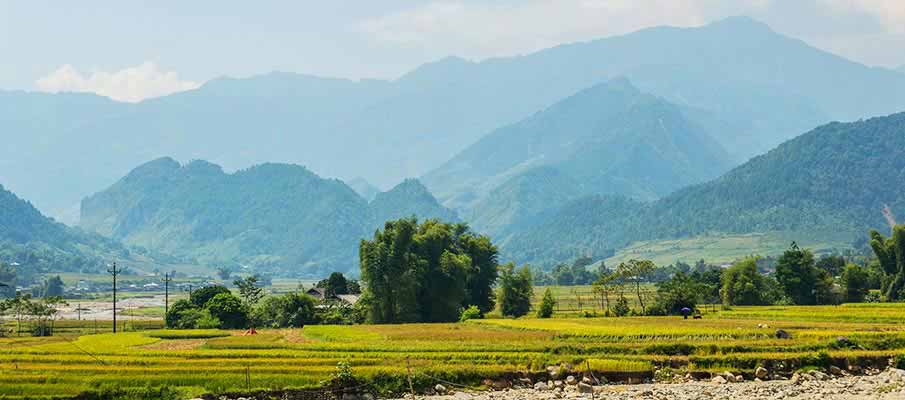
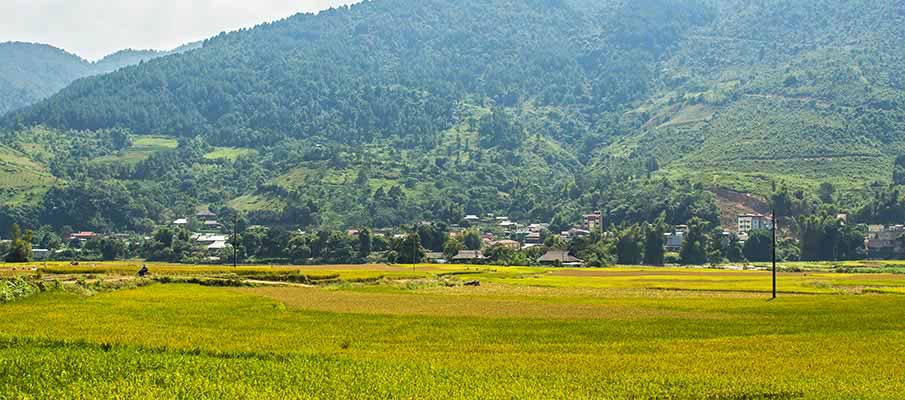

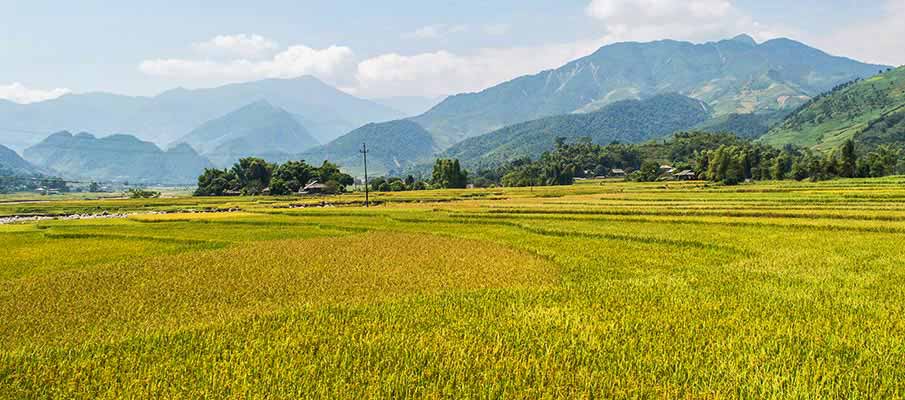

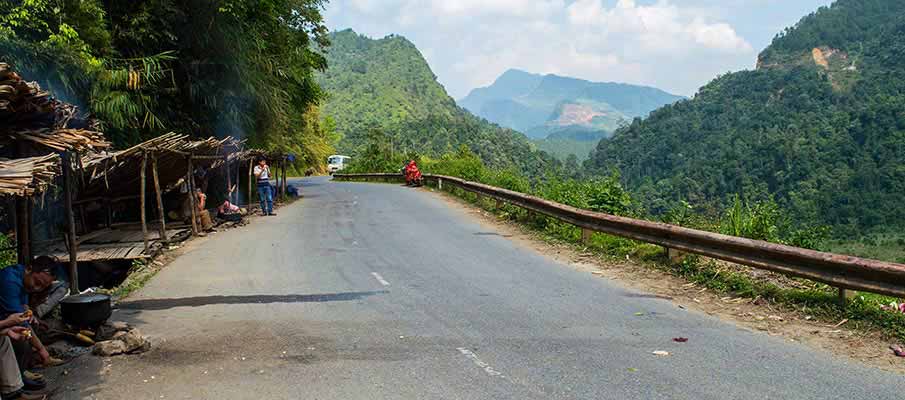
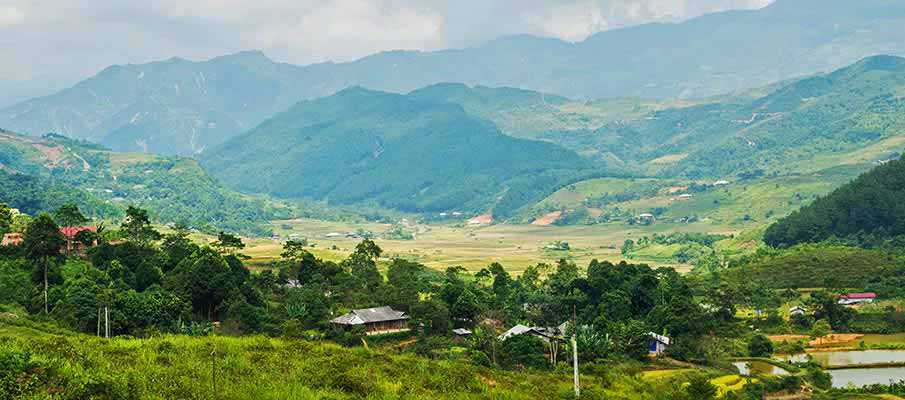

| Interesting Facts about Tu Le Valley: | Description |
|---|---|
| 1. Idyllic Rice Terraces: |
Tu Le Valley is renowned for its idyllic rice terraces, which cover the landscape with intricate patterns of flooded fields during the planting season and lush greenery during the growing season. These terraces are meticulously crafted by local communities, creating a serene and picturesque environment that changes with the seasons, offering a tranquil escape from the hustle and bustle of city life. |
| 2. Unique Muong Lo Culture: |
The Tu Le Valley is located within the Muong Lo region, known for its distinctive culture and traditions. The Muong Lo people, who are a subgroup of the Thai ethnic minority, have inhabited this region for centuries. Visitors can explore the culture, music, dance, and cuisine of the Muong Lo people, offering a deep and immersive experience into their way of life. |
| 3. Quaint Stilt Houses: |
In Tu Le Valley, traditional stilt houses are a common sight. The houses are elevated on stilts, which serves to protect them from flooding during the wet season and to provide shelter for livestock. Visitors often have the opportunity to stay in these charming stilt houses, allowing for a unique and authentic homestay experience. |
| 4. Vibrant Sunday Market: |
Tu Le Valley hosts a vibrant Sunday market, known as the Tu Le Love Market. This market is a lively gathering place for ethnic communities, particularly the Thai and Hmong people, who come to trade, socialize, and find potential partners. It’s a colorful event filled with traditional costumes, handicrafts, local products, and a sense of festivity that offers insight into the local way of life. |
| 5. Water Wheel Traditions: |
Tu Le Valley is known for its ingenious water wheel systems used for irrigating the rice terraces. These traditional water wheels are manually operated and have been used for generations to transport water from the lower streams to the fields above. The water wheel’s rhythmic and labor-intensive operation is a fascinating cultural practice that has become emblematic of the region. |
| 6. Scenic Hot Springs: |
The Tu Le region is known for its natural hot springs. After a day of exploring the terraced fields and cultural sites, visitors can unwind in the region’s hot springs, which offer relaxation and therapeutic benefits. The serene and scenic surroundings add to the appeal, providing a soothing experience for tired travelers. |
| 7. Ethnobotanical Knowledge: |
The ethnic communities in Tu Le Valley have deep ethnobotanical knowledge, particularly about the native plants and herbs in the region. They have developed a wealth of traditional herbal remedies and medicines. Visitors can learn about these medicinal plants and the sustainable practices of these communities, contributing to a greater appreciation of nature and local wisdom. |
| 8. Trekking and Nature Adventures: |
For nature enthusiasts, Tu Le Valley offers a range of trekking and outdoor adventures. The surrounding mountains and forests provide opportunities for exploration and birdwatching. Treks through the terraced landscapes and visits to neighboring ethnic villages are an excellent way to appreciate the pristine beauty of the region. |
| 9. Preservation and Sustainability: |
Efforts are being made to preserve the ecological and cultural integrity of Tu Le Valley. Conservation initiatives aim to protect the environment, promote sustainable farming practices, and empower local communities. Visitors who respect these efforts contribute to the sustainability of this precious landscape and its traditions. |
| 10. Cultural Diversity: |
Beyond the Muong Lo culture, Tu Le Valley is a place of cultural diversity. The valley is a meeting point for different ethnic communities, including the Hmong, Dao, and Kinh people. This cultural melting pot provides an opportunity for cross-cultural exchanges and an enriched understanding of Vietnam’s ethnic tapestry. |
Mua Caves|Trang An Complex|Ban Gioc Falls|Hanoi > Da Nang|Ta Xua Reserve|Dai Yem Fall|Da Nang > Mui Ne|Mui Ne|to Nha Trang